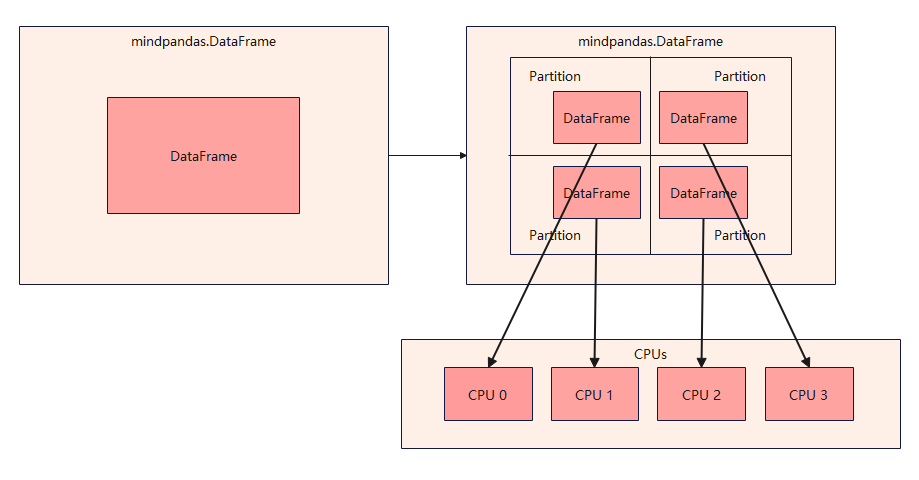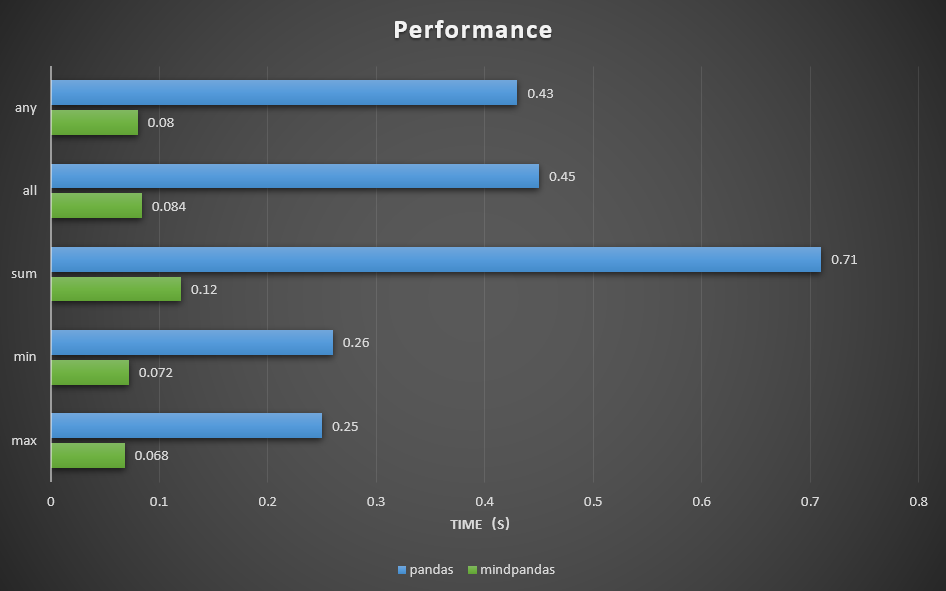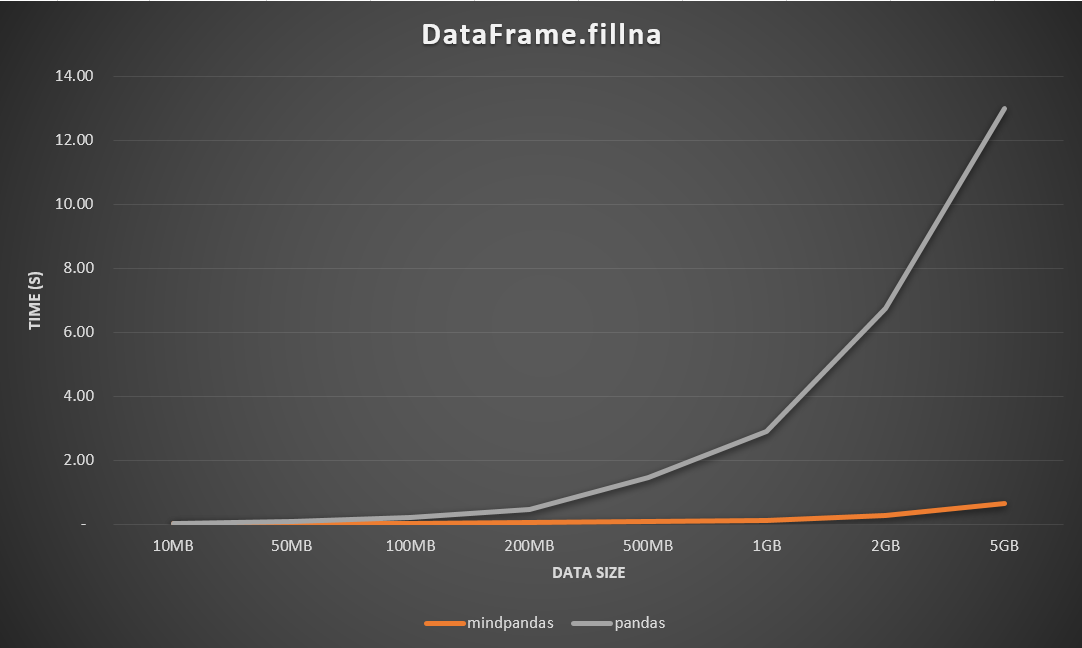MindPandas Documentation
Data processing and analysis is an important part of the AI training process, in which tabular data type is a common form of data representation. The most commonly used data analysis framework in the industry is Pandas, which provides easy-to-use and rich interfaces. However, due to its single-threaded execution mode, Pandas performs poorly when handling large amounts of data. Moreover, because it does not support distribution, it is unable to handle large amounts of data beyond the memory of a single machine. In addition, as the commonly used data analysis framework in the industry is independent of the AI framework such as MindSpore, data needs to go through steps such as disk dropping and format conversion before it can be trained, which greatly affects the use efficiency.
MindPandas is a data analysis framework that is compatible with the Pandas interface and provides a data analysis framework with distributed processing capabilities. MindPandas is dedicated to providing high performance tabular data processing capabilities for large volumes of data. MindPandas can be seamlessly integrated into the training process, enabling MindSpore to support the entire training process of a complete AI model.
The architecture diagram of MindPandas is shown below:

The top layer provides an API that is compatible with Pandas. You can switch to MindPandas for distributed execution by modifying a small amount of code based on the existing Pandas script.
The Distributed Query Compiler converts the API into a distributed combination of basic normal forms (MAP/Reduce/Injective_map, etc.) to ensure the stability of the back-end logic. When new operators are implemented, it can be converted into the existing combination of general computing normal forms.
Parallel Execution layer provides two execution modes: multi-threaded mode and multi-process mode. Users can choose the mode according to their actual scenarios.
MindPandas slices the original data into multiple internal partitions. Each Partition executes the corresponding operator logic in different threads or processes to achieve parallel data processing.
Plug-in operator execution logic is provided at the lowest level. Currently, it mainly supports Pandas operators, and more types of operator logic will be supported in the form of plug-ins later.
Design Features
MindPandas can utilize all cores on the machine
Compared to the single-threaded implementation of the native Pandas, which can only use one CPU core at any given time. MindPandas can effectively use all cores on a single machine or all cores in a cluster that has multiple machines. The usages are as below:

MindPandas can be extended to the entire cluster, utilizing the memory as well as CPU resources of the entire cluster. The usages are as below:

MindPandas is consistent with the native Pandas API in terms of interface usage. You can run scripts by setting the back-end running mode of MindPandas. Just replace the import of pandas with:
# import pandas as pd import mindpandas as pd
Easy to use, to_pandas interface is also compatible with existing Pandas code, in order to achieve excellent performance with small code changes.
MindPandas Performance
MindPandas dramatically reduces computation time by slicing the raw data and performing distributed parallel computation base on slicing.
Using read_csv as an example, an 8-core CPU is used to read a 900MB csv file. The result is as follows:
Test scenarios:
CPU: i7-8565u (4 cores, 8 threads)
memory: 16GB
data size: 900MB csv file
API |
pandas |
mindpandas |
|---|---|---|
read_csv |
11.53s |
5.62s |
import pandas as pd
import mindpandas as mpd
# pandas
df = pd.read_csv("data.csv")
# MindPandas
mdf = mpd.read_csv("data.csv")
Other commonly used APIs, such as fillna, use MindPandas to obtain speedups ranging from several to tens of times.
Test scenarios:
CPU: i7-8565u (4 cores, 8 threads)
memory: 16GB
data size: 800MB (2,000,000 rows * 48 columns)
API |
pandas |
mindpandas |
|---|---|---|
fillna |
0.77s |
0.13s |
import pandas as pd
import mindpandas as mpd
df = df.fillna(1)
# The number of slices can be set according to the actual situation.
mpd.set_partition_shape((4, 2))
mdf = mdf.fillna(1)
Common statistical class APIs are also substantially improved in MindPandas by parallelizing performance, such as max, min, sum, all, and any.
Test scenarios:
CPU: i7-8565u (4 cores, 8 threads)
memory: 16GB
Data size: 2GB (10,000,000 rows * 48 columns)

With the increase of data size, MindPandas provides more advantages for distributed parallel processing. The following figure shows the performance comparison for different data volumes:

Note: MindPandas is set to multiprocess mode and uses a 32-core CPU.
Future Goals
The initial version of MindPandas contains 100+ APIs, which can be divided into four classes, DataFrame, Series, GroupBy and Other. MindPandas will support more APIs and provide efficient data flow.
Typical scenarios using MindPandas
Data Processing using MindPandas
Since MindPandas provides the same interfaces as Pandas, distributed parallel processing of raw data can be performed by replacing the referenced package.
Deployment
Guide
REFERENCES
RELEASE NOTES